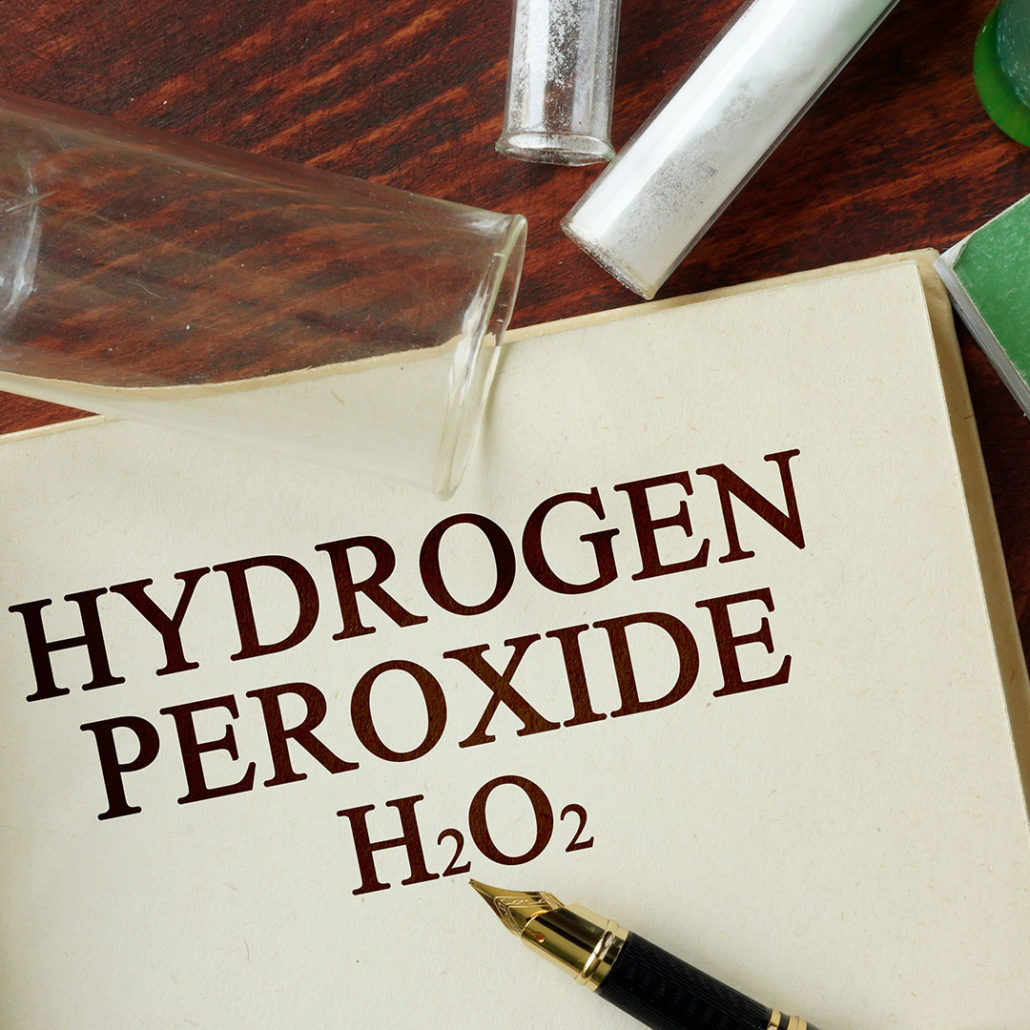Hydrogen Peroxide Therapy (H202)
An intravenous therapy utilizing H202 to boost the immune system and inhibit infections.

An intravenous therapy utilizing H202 to boost the immune system and inhibit infections.
Hydrogen peroxide therapy (H202) is an intravenous therapy in which hydrogen peroxide is infused into the circulatory system through a vein in the arm. In its pure form, it is a colorless and odorless liquid, comprised of two hydrogen atoms and two oxygen atoms, an arrangement that makes the substance highly reactive. Presently, there are over 6,100 articles in scientific literature dating back to 1920 on the clinical applications of hydrogen peroxide.
It is well known that antibiotics are chemicals kill the beneficial bacteria within your intestines and upset the delicate balance of the intestinal terrain. Fortunately, there are other options to treat common conditions without toxic side effects. Hydrogen peroxide, for example, can be used to treat conditions such as cold, flu and sinus infection, and many more. Hydrogen peroxide is a more natural option as our bodies automatically produce H202 constantly as part of metabolism. There are units in certain white blood cells called “peroxisomes,” which produce H2O2. These white cells then engulf bacteria that cause disease and mix them together with these peroxisomes. They both then disappear as the singlet oxygen from H2O2 destroys the bacteria or virus.
Clinical experience has shown that hydrogen peroxide therapy may be used for a number of conditions and issues and that the benefits include:
Hydrogen peroxide therapy severely inhibits the growth of anaerobic organisms (bacteria and viruses that use carbon dioxide for fuel and leave oxygen as a by-product). This action is immediate, on contact with the anaerobic organism. H2O2 provides singlet oxygen, which, in turn, transforms biological waste products and industrial toxins into inert substances by oxidizing them. This makes them easy to handle for the kidneys and liver. It doubles the rate of enzymatic metabolism in the mitochondria within each cell, thus enabling the body to cleanse itself of toxins and still have plenty of energy to handle the business of living from moment to moment. This increase in metabolism probably accounts for some of the antibacterial, antifungal, and antiviral effects of hydrogen peroxide.
In the blood, hydrogen peroxide encounters two enzymes: catalase and cytochrome-C. Catalase drives the above reaction to completion immediately. That part of the hydrogen peroxide that binds with cytochrome-C, however, is not allowed to become water and singlet oxygen for a period of 40-45 minutes. After about 40 minutes of being bound to cytochrome-C this enzyme begins to act like catalase and breaks down the hydrogen peroxide to water and singlet oxygen. By this time, the hydrogen peroxide/cytochrome-C complex has been spread throughout the body. In this way, the benefits of hydrogen peroxide are made available to all cells.
With intravenous therapy, pharmaceutical-grade hydrogen peroxide is used under strict sterile technique. The amount of hydrogen peroxide is predetermined by a doctor. It also could be mixed with a 5% dextrose solution to which magnesium sulfate and a small amount of manganese sulfate are added to prevent vein sclerosis. First, a nurse or practitioner will sterilize the insertion area, then insert a clean sterilized needle. Once the needle is inserted into the vein it will be connected to a tube where hydrogen peroxide will flow through and reach the circulatory system. The administration takes about 90 minutes, depending on the amount of H2O2 used.

“Hydrogen peroxide contributes to the lysis [destruction] of tumor cells by macrophages [immune cells] and granulocytes [white blood cells] in vitro.”
DR. ZANVIL A. COHN
Early cancer research at the Baylor University Medical Center in Texas began in the early 1960s with Dr. J. W. Finney and his associates. An article discussing their findings, published in the Southern Medical Journal in March 1962, spoke of the value of hydrogen peroxide as an adjunct to radiation therapy for treating cancer. “The Use of Hydrogen Peroxide as a Source of Oxygen in a Regional Intra-arterial Infusion System” revealed that cancer cells become more sensitive to irradiation in the presence of increased oxygen tension produced by hydrogen peroxide. Cancer Phases I and II of the study involved laboratory animals. In Phase III of the study, doses of hydrogen peroxide diluted in water were administered intra-arterially to patients suffering from a variety of carcinomas. The researchers noted increased regional oxygenation, which led them to believe that there is an “increased therapeutic ratio” in malignant tumors receiving radiation when oxygen levels of the affected area are increased with hydrogen peroxide.
source: The Oxygen Prescription, 2004
A book by William Campbell Douglass, MD contains very impressive case studies on the use of H2O2 on numerous different conditions such as multiple sclerosis, rheumatoid arthritis, arteriosclerosis, bronchiectasis, emphysema, arthritis, varicose veins, pneumonia, asthma, COPD (Chronic Obstructive Pulmonary Disease), flu, yeast/Candida, warts and moles, and many more. Dr. Douglass points out that there are over 6,100 articles in the scientific literature dating from 1920 on the scientific applications of hydrogen peroxide. One of the statements says“ Tumor cells, bacteria and other unwanted foreign elements in the blood can usually be destroyed with hydrogen peroxide treatment. Peroxide has a definite destructive effect on tumors, and, in fact, cancer therapy may prove to be the most dramatic and useful place for peroxide therapy.
source: Hydrogen Peroxide Medical Miracle, William Campbell Douglass, MD 1990
At the New York Center of Innovative Medicine, hydrogen peroxide therapy is one of many different oxidative therapies considered for each patient. However, the use of this therapy is only performed on patients after an in-depth initial evaluation reveals it would be necessary for your personalized program of treatment. Because each person is unique, and their health needs are different, there is no set protocol for using H202 therapy nor is the patient able to request the use of this therapy if the medical team finds it would not be as helpful as another treatment or specific combination of therapies. The ultimate goal is the complete restoration of health in the most efficient and safe manner, and with so many therapeutic options, it is impossible to know if hydrogen peroxide therapy is right for you without an initial evaluation at our clinic.
Contact NYCIM and Book Your Appointment Today
or
» Take Our Questionnaire to See if You’re a Good Candidate
or
» See Additional NYCIM Services & Therapies
We’ll send you a 24 page intro guide and more on how to heal smarter.

 Homeopathy
Homeopathy
Trackbacks & Pingbacks
[…] Hydrogen Peroxide Therapy: An intravenous therapy that severely inhibits the growth of anaerobic organisms (bacteria and viruses). […]
Leave a Reply
Want to join the discussion?Feel free to contribute!